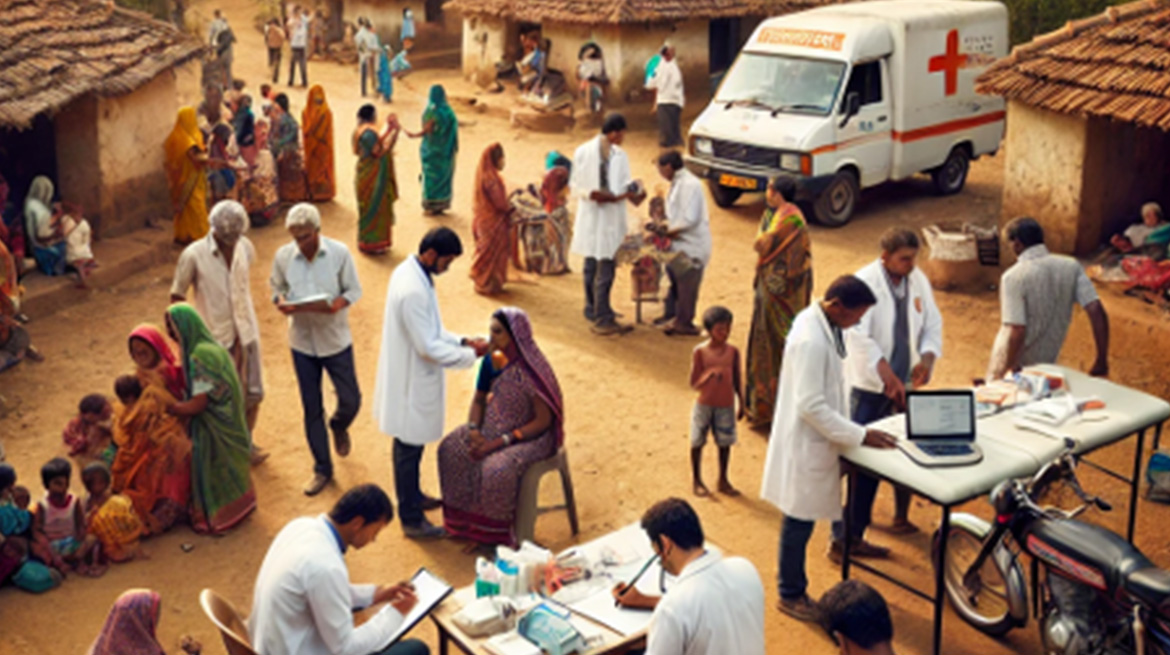Introduction
India’s healthcare system faces a persistent urban-rural divide, with rural populations struggling to access timely medical care. To bridge this gap, the National Medical Commission (NMC) introduced the Family Adoption Program (FAP) within the MBBS curriculum. This initiative enables medical students to engage with underserved communities, providing primary healthcare support while gaining hands-on experience in community medicine.
A key aspect of the program’s success is the collaboration between medical students, local health workers, and government authorities. This article highlights the crucial role these stakeholders play in ensuring effective healthcare delivery to rural families.
The Role of Local Health Workers in the Family Adoption Program
Local health workers, including Accredited Social Health Activists (ASHAs), Auxiliary Nurse Midwives (ANMs), and Anganwadi workers, form the backbone of rural healthcare services. Their involvement in the Family Adoption Program enhances its impact in the following ways:
- Facilitating Health Education and Awareness:
- Health workers educate families about communicable and non-communicable diseases, hygiene, and government health schemes.
- Their deep community ties help dispel myths and misconceptions related to healthcare.
- Conducting Pre-Adoption Assessments:
- They assist medical students in understanding the socio-economic and health background of adopted families.
- Their local insights help identify high-risk individuals, such as those with chronic illnesses or malnutrition.
- Ensuring Continuity of Care:
- Local health workers conduct regular follow-ups and home visits, ensuring adherence to treatment plans.
- They act as a bridge between medical students and families, providing feedback and tracking progress over time.
Collaboration with Government Authorities
Government authorities play a pivotal role in ensuring the successful implementation of the Family Adoption Program. Their responsibilities include:
- Supporting Infrastructure and Resources:
- Providing medical supplies, diagnostic tools, and logistical support for community visits.
- Ensuring that students have access to data on local health indicators to guide their interventions.
- Organizing Health Camps and Special Initiatives:
- Authorities coordinate with medical colleges to conduct diagnostic camps, addressing prevalent health issues like anemia, diabetes, and hypertension.
- They facilitate subsidized or free treatment under government schemes for chronic illness management.
- Monitoring and Evaluation:
- Government health officials assess the program’s impact, ensuring transparency and accountability.
- They work with local health workers and students to identify areas for improvement and policy interventions.
Community Engagement for Sustainable Healthcare
For long-term success, community participation is vital. By fostering collaboration between students, local health workers, and authorities, the program aims to:
- Promote Preventive Healthcare: Conducting workshops and counseling sessions on sanitation, nutrition, and vaccination.
- Encourage Environmental Initiatives: Tree plantation drives and sanitation awareness campaigns to promote holistic well-being.
- Strengthen Social Responsibility: Medical students become advocates for community health, building trust between healthcare providers and the rural population.
Addressing Systemic Challenges
Effective collaboration helps prevent systemic challenges such as healthcare misinformation, illegal medical practices, and service delivery gaps. By reinforcing trust and transparency in community health programs, the Family Adoption Program creates a sustainable healthcare model that can be replicated across various regions in India.
Conclusion: The Future of Collaborative Community Healthcare
The Family Adoption Program is not just an academic exercise but a transformative approach to public health education and service delivery. By leveraging the strengths of medical students, local health workers, and government authorities, the program ensures that rural families receive equitable and continuous healthcare support.
With stronger policies, increased funding, and technological integration, this collaborative model has the potential to revolutionize India’s primary healthcare system, creating a more resilient and health-conscious society.
References:
- National Medical Commission. Family Adoption Program Guidelines.
- Ministry of Health and Family Welfare, Government of India.




